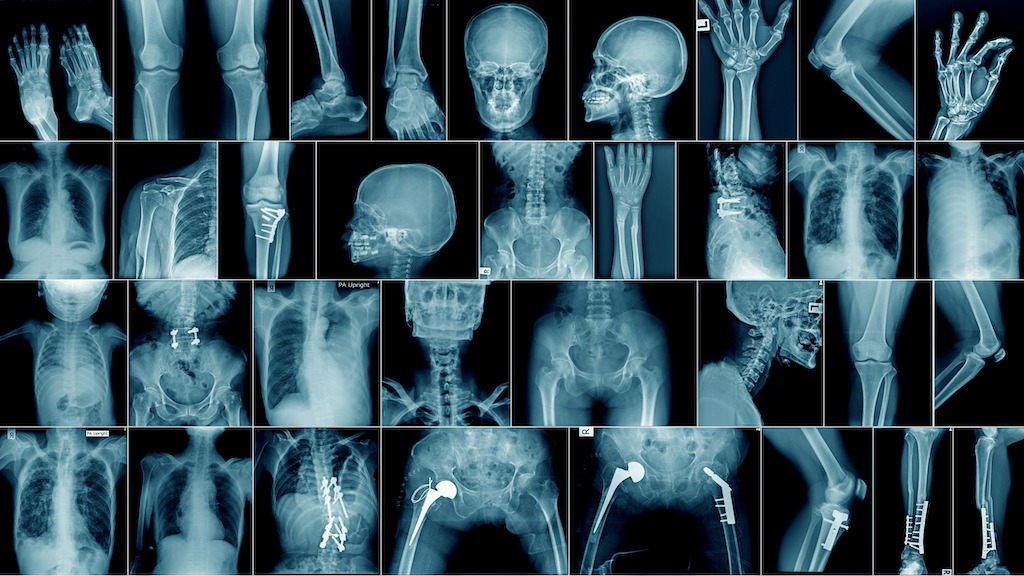Sorry everyone that yesterday's post did not post as expected. I just posted it for your reading pleasure with or without your reading glasses. ;) Today we are going to look at the history of pets on pet Friday. The following comes to us from www.britannica.com:
"pet, any animal kept by human beings as a source of companionship and pleasure.
While a pet is generally kept for the pleasure that it can give to its owner, often, especially with horses, dogs, and cats, as well as with some other animals, this pleasure appears to be mutual. Thus, pet keeping can be described as a symbiotic relationship, one that benefits both animals and human beings. As the keeping of pets has been practiced from prehistoric times to the present and as pets are found in nearly every culture and society, pet keeping apparently satisfies a deep, universal human need.
The history of pets is intertwined with the process of animal domestication, and it is likely that the dog, as the first domesticated species, was also the first pet. Perhaps the initial steps toward domestication were taken largely through the widespread human practice of making pets of captured young wild animals. Eventually, a working relationship developed between the dogs and their human captors. The dog was swifter, had stronger jaws, and was better at tracking prey; therefore, it could be of great use in hunting and guarding duties. From human beings, on the other hand, the dogs were assured of a constant supply of food as well as warmth from the fire. There is indirect evidence that the dog may have been domesticated and kept as a pet since Paleolithic times, as can be surmised from the paintings and carvings that archaeologists have found in ancient campsites and tombs. In Mesopotamia, dogs that look remarkably like the present-day mastiff were shown participating in a lion hunt. Domestic pets were often depicted in the scenes of family life in ancient Egypt; hunting dogs of the greyhound or saluki type accompany their master to the chase, and lap dogs frequently sit under the chair of their master or mistress.
Next to the dog, horses and cats are the animals most intimately associated with human beings. Surprisingly, both these animal groups were domesticated rather late in human history. There is no evidence that horses were domesticated in Paleolithic or Mesolithic times, but by about 2000 BCE horses used in chariot battles were an established phenomenon throughout the Middle East. It seems that riding astride horses was a practice developed a few centuries later (see horsemanship). The cat too does not seem to have been domesticated as a pet until the New Kingdom period (about the 16th century BCE) in Egypt. This is all the more strange as the ancient Egyptians had tamed many types of animals, such as lions, hyenas, monkeys, the Nile goose, and dogs, since the Old Kingdom period. But once cats were finally domesticated, their popularity was enormous. Gradually, the cat became one of the most universally worshiped animals.
As has been noted, the primary bond distinguishing a pet-and-owner relationship is affection. As useful as many of these animals are, what differentiates a pet from other economically useful livestock is the degree of contact between the animals and human beings. Often, this relationship has been unabashedly sentimentalized in myth, art, and literature. The affection between Alexander the Great and his favourite horse, Bucephalus, has become legendary, while in the modern age the popularity of such canine motion-picture stars as Rin Tin Tin and Lassie is further evidence of the importance placed on the relationship between owner and pet.
The pet-and-owner relationship, however, is not only founded on companionship; since the earliest period of domestication, pets have fulfilled practical, economic ends. Catching other animals to feed their human masters is one of the most fundamental uses of pets, and not only dogs have served in this capacity but cats, hyenas, and lions have also been used for hunting. The aristocratic, rather arcane sport of falconry made use of the natural talent of hawks to aid in hunting game birds. Pets have also been used for the purpose of guarding—either other livestock, the home or territory of their owners, or the owners themselves. Any pet that has a sharp sense of smell or hearing and that makes a loud noise when aroused can be used as a guard, although dogs are the best-known examples. It is thought that the Nile goose, a favourite household pet of the ancient Egyptians, may have served such a purpose. The herding and guarding of livestock is another practical use of pets, in particular the dog. Over the centuries, many specialized breeds of dog have been developed to suit this purpose.
Often, pets have been used as a source of food when other sources become scarce. This has been the case with dogs throughout their history of domestication in both the Old World and the New World. Guinea pigs, domesticated as pets in the New World, also assured a stable food supply.
Pets have also been used to eliminate animal pests. The rat-catching ability of cats is celebrated in fairy tales such as “Puss ’n Boots” and “Dick Whittington,” as is the snake-catching talent of the mongoose in Rudyard Kipling’s “Rikki-tikki-tavi.”
Finally, pets themselves have become a self-perpetuating industry, bred for a variety of purposes, including their value as breeding animals. Pets that are bred for aesthetic purposes may have full-fledged show careers. Other pets may be bred for racing or other competitive sports, around which sizable industries have been built.
Animals kept as pets can be classified according to the type of premises or habitat they usually occupy. Dogs, cats, and birds such as canaries and parakeets are kept as household pets. Other birds, such as jays, magpies, and members of the crow family, are kept in aviaries. When kept as pets, reptiles and amphibians frequently require special conditions of heat and moisture. For this reason, they are best kept in glassed enclosures called vivaria. The most common vivarium pets are snakes, lizards, turtles, frogs, and toads. Many people keep fish as aquarium pets. Fishes constitute a completely separate section of the pet world, and an international industry exists for catching, breeding, transporting, and supplying stock. Hutch, or cage, pets can be kept indoors or outdoors under protected conditions. These pets include rabbits, guinea pigs, rats, mice, hamsters, gerbils, and, recently, chinchillas. Paddock pets are those that must be stabled outdoors and include such animals as horses, ponies, donkeys, and mules. Several kinds of insects are also kept as pets. These include walking-stick insects (kept in simple containers at room temperature) and ants (kept in artificial nests).
Of increasing concern is the sale of exotic pets (e.g., jaguars, alligators, ocelots, monkeys, apes, kinkajous, etc.). Rarely are the owners of such pets able to provide the basic nutritional or habitat needs of these animals; most of the animals soon die or are sent to a zoo. Furthermore, in order to obtain the young, which are considered most desirable as pets, many adults of the wild species are killed, seriously depleting populations already endangered. Several countries have passed laws to prohibit the importation of endangered species as pets, but an active black market flourishes."
Reference: Britannica, T. Editors of Encyclopaedia (2021, December 13). pet. Encyclopedia Britannica. https://www.britannica.com/animal/pet
I have lost a lot of faith with the Medical Community and the Governments over the last several years, but there are a few good things that can raise above the corruption and the pushing of drugs a new approach to heal people. The following is from www.gaia.com and written by Hunter Parsons that does not involve any drug or pushing an ineffective so called vaccine that the drug company is not held accountable in any way but they use sound! The use of sound can regrow bone tissue! Here is the story:
"The future of regenerative medicine could be found within sound healing by regrowing bone cells with sound waves.
The use of sound as a healing modality has an ancient tradition all over the world. The ancient Greeks used sound to cure mental disorders; Australian Aborigines reportedly use the didgeridoo to heal; and Tibetan or Himalayan singing bowls were, and still are, used for spiritual healing ceremonies.
Recently, a study showed an hour-long sound bowl meditation reduced anger, fatigue, anxiety, and ...
Not a fan of a Defense Agency studying Anti-Gravity and other Exotic Tech, but if the commercial world and make this technology cheap that will change our world yet again. The following is about three minute read and from www.gaia.com. The below was written by Hunter Parsons:
"Wormholes, invisibility cloaks, and anti-gravity — it’s not science fiction, it’s just some of the exotic things the U.S. government has been researching.
A massive document dump by the Defense Intelligence Agency shows some of the wild research projects the United States government was, at least, funding through the Advanced Aerospace Threat Identification Program known as AATIP.
And another lesser-known entity called the Advanced Aerospace Weapons System Application Program or AAWSAP
The Defense Intelligence Agency has recently released a large number of documents to different news outlets and individuals who have filed Freedom of Information Act requests.
Of particular interest are some 1,600 pages released to Vice News, which ...
As our technology gets better we are discovering more about the history of mankind and pushing the timeline back further and further. The following article is from www.gaia.com and written by Michael Chary that discusses this new find that changes the historical timeline:
"Over the past decade, there have been a number of archeological revelations pushing back the timeline of human evolution and our ancient ancestors’ various diasporas. Initially, these discoveries elicit some resistance as archeologists bemoan the daunting prospect of rewriting the history books, though once enough evidence is presented to established institutions, a new chronology becomes accepted.
But this really only pertains to the era of human development that predates civilization — the epochs of our past in which we were merely hunter-gatherers and nomads roaming the savannahs. Try challenging the consensus timeline of human civilization and it’s likely you’ll be met with derision and rigidity.
Conversely, someone of an alternative...
Not sure if you have heard of a show on YouTube called "The Why Files". If not you should check it out it is interesting and has some humor with it on different subjects. Last weeks was on a different theory how the Universe works and how main stream Science is attempting to shut it down like is always seems to do if it goes aguest some special interest. Today it is akin to what happened to those who questioned the Earth was the Center of the Universe that main stream so called Science all believed during the Renaissance period, They called any theory that the Earth was not the Center of the Universe misinformation. Does this sound familiar today? People laughed and mocked people like Leonardo da Vinci, Nicolaus Copernicus, Georg Purbach as crack-pots, conspiracy theorists, nut-jobs and they were suppressed and even imprisoned for their radical thoughts and observations. Again it sounds like today in so many ways. In any event this is a good one to ponder and see even if a bad idea ...
Seemingly chaotic systems like the weather and the financial markets are governed by the laws of chaos theory.
We all have heard about chaos theory, but if you have not or have forgotten what chaos theory is well here you go from interestingengineering.com:
"Chaos theory deals with dynamic systems, which are highly sensitive to initial conditions, making it almost impossible to track the resulting unpredictable behavior. Chaos theory seeks to find patterns in systems that appear random, such as weather, fluid turbulence, and the stock market.
Since the smallest of changes can lead to vastly different outcomes, the long-term behavior of chaotic systems is difficult to predict despite their inherently deterministic nature.
As Edward Lorenz, who first proposed what became commonly known as the Butterfly Effect, eloquently said, "Chaos: When the present determines the future, but the approximate present does not approximately determine the future.""
You may have heard the term about chaos theory as a butterfly flaps its wings in Brazil,...
I for one have lost trust in Medical Doctors due to COVID and reflection that they seem to push pills for everything and untested so called vaccines that is using a unproven technology because the Government and the Medical Boards of the State told them to. There are a very few exceptions. Thus they do not address the key problem just prescribe more and more pills to keep you alive an sick longer for them and Big Phama to profit from you. Will AI do any better? Well that depends on what was used for the training of AI. If it also pushes pills and vaccines without question then you have the same problems noted above. However, if the AI Training includes all possible forms of treatment and they zero in on the right issues for the true problem then there is possibilities they would be way better than most of the current Medical Doctors today.
The following is from an article from interestingengineering.com and written by Paul Ratner:
"A new study looks at how accurately AI can diagnose patients. We interview the researcher, who weighs in on AI's role ...


























